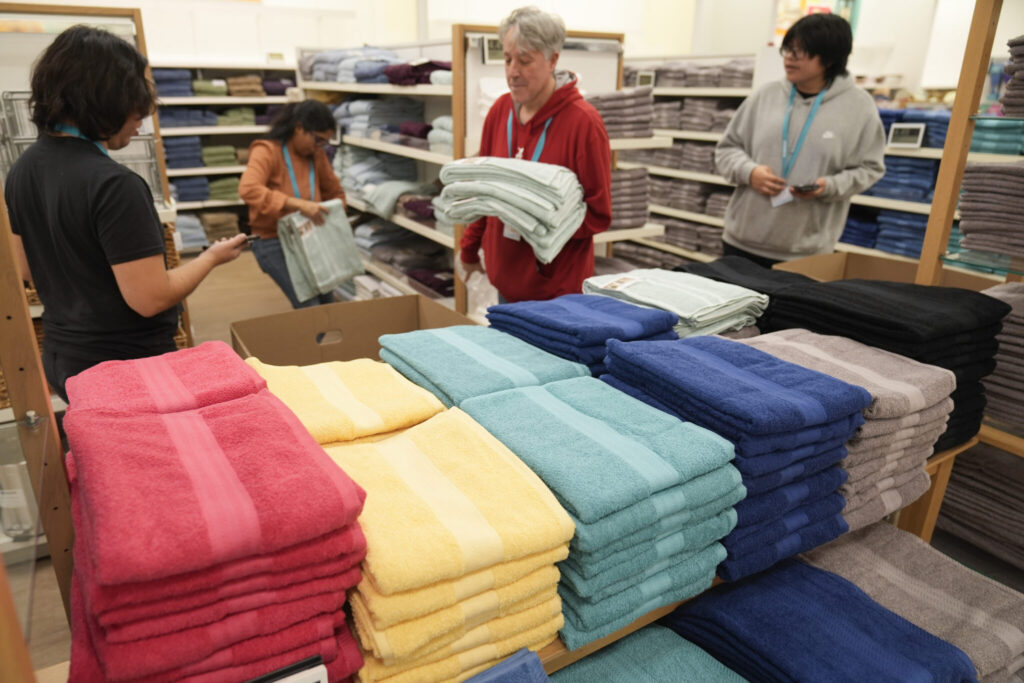Shoppers picked up their spending a bit in February after a pullback the previous month, reflecting the mixed feelings Americans have in an economy where prices are up, but jobs are plentiful. Retail sales rose 0.6% last month after falling a revised 1.1% in January, dragged down in part by inclement weather, according to the Commerce Department’s report on Thursday. But the February number was weaker than had been predicted and the January’s sales estimate was revised lower.
Quick Read
- Retail sales in the U.S. saw a modest increase of 0.6% in February, a recovery from a 1.1% decline in January, influenced by factors like weather conditions, according to the Commerce Department.
- The increase was partially driven by higher gas prices and auto sales, with national gas prices rising to an average of $3.41 per gallon. Excluding gas and auto sales, retail sales experienced a smaller 0.3% uptick.
- Despite the gains, the growth in February was below expectations, and the previous month’s sales were revised downward, indicating a potential softening in discretionary spending amid inflation and dwindling savings.
- Specific sectors like department stores and online retailers saw declines, while electronics and appliance stores enjoyed a 1.5% increase, suggesting varying consumer priorities.
- The strong job market and wage growth continue to support consumer spending, but the rising costs of credit and persistent high prices have led to more cautious spending habits.
- The robust employment figures for February, with 275,000 jobs added, highlight the U.S. economy’s durability but also complicate the Federal Reserve’s efforts to control inflation, which remains a challenge.
- Retailers report that consumers are increasingly seeking discounts and prioritizing essentials, indicating a shift in shopping behavior from the pandemic era when sales and promotions were less frequent.
- The retail sales report provides insight into consumer spending on goods but does not cover service expenditures or adjust for inflation, offering a limited perspective on overall consumer behavior.
The Associated Press has the story:
February retail sales up 0.6% as shoppers picked up their spending
Newslooks- NEW YORK (AP) —
Shoppers picked up their spending a bit in February after a pullback the previous month, reflecting the mixed feelings Americans have in an economy where prices are up, but jobs are plentiful.
Retail sales rose 0.6% last month after falling a revised 1.1% in January, dragged down in part by inclement weather, according to the Commerce Department’s report on Thursday. But the February number was weaker than had been predicted and the January’s sales estimate was revised lower.
February’s number was also lifted in part by higher gas price and higher auto sales. Excluding sales from gas stations and auto dealers, sales were up 0.3%.
As of Thursday, the national average gas price stands at $3.41 per gallon, per AAA. That’s higher than the average price than $3.39 a week ago, and a month ago when it was $3.26.
“February retail sales provide further proof that spending on discretionary goods in 2024 is likely to be soft following several years of strong growth and as consumer health – albeit still relatively strong – is somewhat weighed down by inflation and reduced savings,” said David Silverman, senior director at Fitch Ratings.
Business at department stores fell 0.2%, while clothing and accessory stores posted a 0.5% drop. Furniture and home furnishings stores saw a 1.1% decline. Online sales were down 0.1%. But electronics and appliance stores had a solid 1.5% increase. Restaurants posted a 0.4% increase.
Household spending is being fueled by a strong jobs market and rising wages. But spending has become choppy in the face of rising credit costs and higher prices.
America’s employers continued to hire in February, adding a surprising 275,000 jobs, underscoring the U.S. economy’s resilience despite efforts of the U.S. Federal Reserve to knock down inflation by slowing spending.
While costs for many goods appear to have plateaued, consumer prices in the United States picked up last month, showing how a vibrant economic activity and strong consumer spending has made fighting inflation a complicated task for the Fed, and a potential headache for President Joe Biden’s bid for re-election.
The most recent quarterly financial reports from big retailers like Walmart,Target and Macy’s show that their customers are looking for deals and in many cases sticking to the necessities when they shop.
“They continue to shop but they are more constrained, ” Target’s CEO Brian Cornell told The Associated Press in an interview last week. “People are using credit cards to get through the month. Rent costs across the country are up, and gas has been volatile.”
Chris Riccobono, founder of New York clothing chain Untuckit. said that customers are waiting for sales. That is a break from the pandemic and he said this year he wants to cut back on the company’s reliance on discounts to drive sales.
“I want to start to train our customers to get back into the pre-COVID days,” he said. That was when the company had sales three times a year.
The government’s monthly retail sales report offers only a partial look at consumer spending; it doesn’t include many services, including travel and hotel lodges. It’s also not adjusted for inflation.







